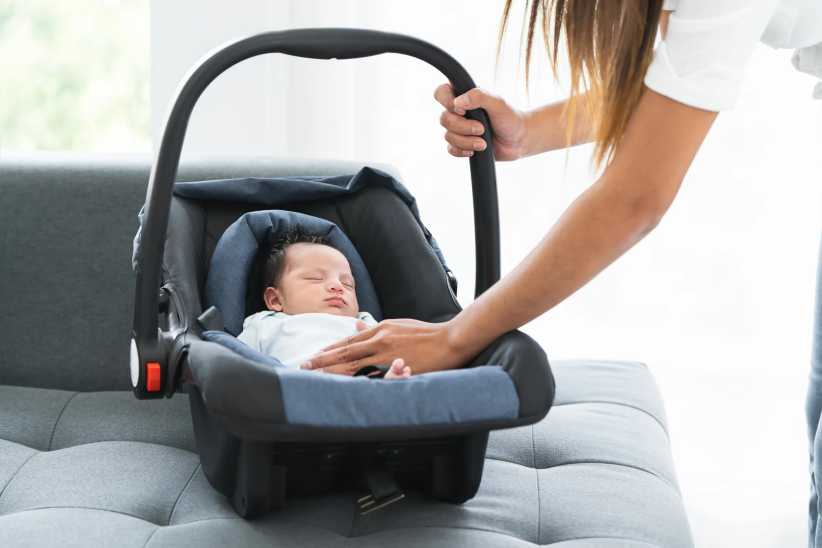 It’s a common gripe of parents: their baby was sleeping great…until they went on vacation. Traveling, it seems, can impact everything from your child’s sleep schedule to how often she wakes in the night. But does it have to? According to Meg Casano, BSN, MA, and Senior Sleep Consultant and Sleep Team Leader with the pregnancy and early parenting resource, Isis Parenting, the answer is, no–as long as your child had a solid sleep foundation to begin with. Here, she answers questions on common sleep issues families face and how to address them so both kids and parents can enjoy a good night’s rest away from home.
It’s a common gripe of parents: their baby was sleeping great…until they went on vacation. Traveling, it seems, can impact everything from your child’s sleep schedule to how often she wakes in the night. But does it have to? According to Meg Casano, BSN, MA, and Senior Sleep Consultant and Sleep Team Leader with the pregnancy and early parenting resource, Isis Parenting, the answer is, no–as long as your child had a solid sleep foundation to begin with. Here, she answers questions on common sleep issues families face and how to address them so both kids and parents can enjoy a good night’s rest away from home.
Why does traveling seem to throw off baby sleep so much?
Actually, for babies and toddlers who are good sleepers before traveling and have predictable routines, there are lots of ways to ensure time away causes little disruption, if any! But for those parents who do experience a setback, the causes are usually quite predictable and can include time zone changes, sleeping in environments that are bright, hot or noisy, and/or having irregular bedtimes and nap times while away–all of which can desynchronize the circadian rhythm.
It’s also very common for families to pick up new sleep associations out of necessity (like bed sharing due to cramped quarters, extra feedings to quiet a baby in a hotel room, or rocking to prevent waking a sibling) and these can take some time to reverse when you arrive home as well.
You mentioned the circadian rhythm–why is this important to pay attention to?
The circadian rhythm is the biological clock. It is complicated and controls many events in the body like digestion, hormone production, and sleep. It’s what can give your child a nice, predictable (and easy!) bedtime, but it can desynchronize without regularity, too.
The circadian rhythm and homeostatic pressure (how tired a child is) are the two main drivers of sleep and it’s important to understand how the two work together (or against each other!) when trying to solve a sleep problem in your child.
How important is a consistent routine when you travel?
There’s bedtime consistency, and then there’s bedtime routine consistency. Putting your child to bed 15 minutes later than her usual bedtime (assuming naps were okay) on your first night or two in a new place can help increase her homeostatic pressure and cause her to fall asleep more quickly in a new place. Familiar bedtime routines can also be helpful when sleep location has changed: bringing your child’s favorite story, lovey, blankie, and even packing your white noise machine to mask those unfamiliar bumps in the night are all very reassuring.
Is it typical for children to skip a nap or wake up super-early when traveling because they are somewhere new?
That depends on where you are going and what the environment is like. Sleeping in rooms that are very bright and hot late at night and/or early in the morning will almost certainly shorten your child’s night and it’s only fair you allow for that, particularly in regards to early morning wake-ups when homeostatic pressure is low. Even under the best circumstances, it’s low in the early morning for a baby and that makes it harder for her to go back to sleep. If your baby is waking with the sun, she might benefit from a longer nap, or a toddler who was not napping at all may begin napping again while away.
Travel often involves lots of fun activities that make it hard to plan around naps and early bedtimes. Do you encourage parents to stick to their schedules or is vacation a time to be more flexible?
I encourage families to do what will make their time away most enjoyable! For some parents, nap time is almost sacred–a respite for everyone which improves mood and makes for a more enjoyable afternoon for the whole family. These families will probably want to preserve their nap time and plan activities around it. Other families are happiest pushing through and packing as much as they can into their days and their kids will nap on the go. The only catch is parents need to remember that if they are altering their child’s schedule significantly–i.e. disrupting or shortening naps–it’s only fair they be more patient with the unpredictability, crankiness, and meltdowns that may occur!
Of course, when a family returns from their travels, it’s essential to get back on track as quickly as possible so long term sleep disruption isn’t a problem.
What do you do when you are traveling to a different time zone?
My top tips: When traveling east, don’t take a red eye! (It’s complicated, but in a nutshell it provides light exposure at the exact wrong time of night for transitioning into the new time zone.) When you arrive in your new location, don’t think about social time or clock time as much as your baby’s biological time–i.e. what time does your baby’s body think it is? For example, if you just left California and your baby was going to bed at 7pm there, when you arrive in New York, if you put your baby to bed at 7pm she will think it’s 4pm in California and will fight sleep! If you put her to bed at 10pm New York time, she will go to sleep just great! And, don’t try to shift in one day–make changes slowly. I could write a chapter on this, but the best resource for this is my Isis Parenting Sleep Team Co-Leader Dr. Erin Evan’s travel webinar (scroll down to “Travel, Timezones, and Infant Toddler Sleep).
What about when you stay in a hotel or at a relative’s house where the sleeping arrangements are different than at home. Any tips for making the night go smoothly?
I just recommend doing what makes you the most comfortable! If it’s safe, it’s in-bounds. I’ve known parents who always book a suite or adjoining rooms and parents who have put their kids Pack n’ Plays in the extra-large hotel bathroom (out of reach of dangerous things) and others who just cram in and figure it out! My advice: bring your own travel crib rather than relying on a hotel to provide a safe crib, and use a continuous white noise machine in case you are in a room near some rowdy guests or the elevator!
Is there anything else that would be helpful for parents to know?
I would encourage parents not to wait too long before seeking help if their child’s sleep is disrupted. For those parents who do need some guidance, be sure you go to a reputable source. It’s important to talk to someone who understands there is more than one right way to solve a sleep problem and will take parenting style and family needs into consideration when solving a problem.
DOES YOUR FAMILY NEED SLEEP SUPPORT?
Want to learn more about infant and toddler sleep? Isis Parenting offers sleep support in the form of one-on-one consults and free weekly webinars. For more information, click here.













